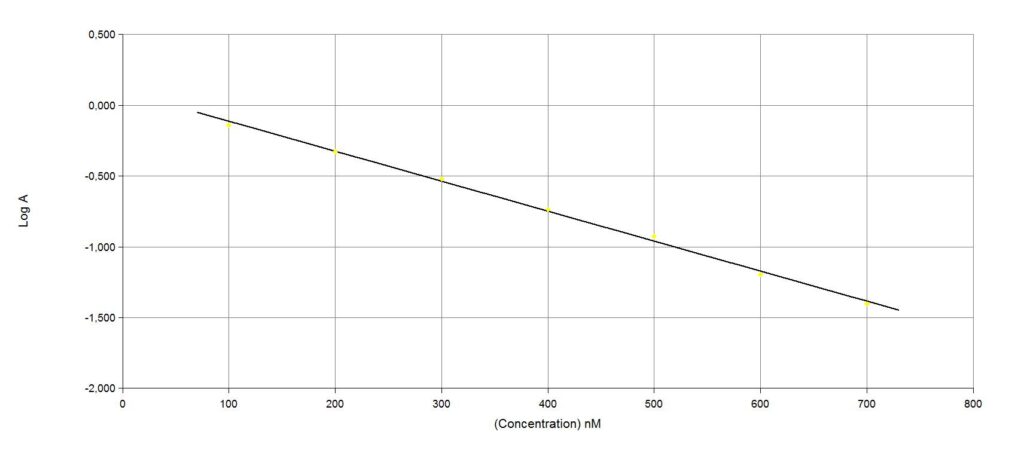PCSK9 (human) Monoclonal Antibody (Clone 15A6)
PCSK9 (human) Monoclonal Antibody (Clone 15A6)
Proprotein convertase subtilisin kexin 9 (PCSK9) is a member of the subtilisin serine protease family with an important role in...

€333.00
Present in nature in the form of iodide and iodate, iodine is a solid halogen at normal temperature. It is used in medicine, in the pharmaceutical and food industry. Food is the principal daily supply of iodide in human body [1].|Iodide is important in basal metabolism and permits temperature regulation, intellectual development for children, muscular development, normal heart function and growth of skeleton. Iodide transport is the basis for an emerging approach of selective cancer cell destruction. [2-3]|Iodide uptake from blood into thyroid follicular cells is the first step in the biosynthesis of thyroid hormones T4 and T3, known to regulate many essential biological processes [4-5].|Thyroid hormones are indispensable for body development. This transport is mediated by NIS (sodium iodide symporter), an intrinsic membrane glycoprotein located in the basolateral membrane of thyrocytes.|Since the discovery of NIS, thorough biochemical analysis has elucidated the mechanism of basolateral iodide transport and revealed the key role of NIS in thyroid diseases such as thyroid cancer, autoimmune disease, and congenital hypothyroidism [6].|If rate is not in the normal proportion, some diseases can be developed as underactive thyroid if the rate is too down or overactive thyroid if the rate is too up. Other diseases exist as chronic thyroiditis of Hashimoto or cancer of the thyroid gland [7].|Iodide deficiency is at origins of many thyroid metabolism disorders, this is why it is important to control rate of iodide to prevent all of these diseases.|This Iodide Assay is based on the oxido-reduction reaction: cerium(IV) is reduced by arsenic(III). The reduction of yellow (420 nm) cerium(IV) to colorless cerium(III) by arsenic(III) proceeds very slowly but traces of iodide strongly accelerate this reaction with the rate being directly proportional to iodide concentration.|For a given time, decay is inversely proportional to iodide
concentration in well. This method is simple and nonradioactive, and as such it can be used widely.
Territorial Availability: Available worldwide directly through Bertin or your local distributor
| Size | 96 wells |
|---|---|
| Shipping | wet ice |
| Application(s) | Iodide quantification |
| Specificity | refer to technical booklet |
| Application media | It is the responsibility of the user to check the compatibility of the assay with the study matrix |
| Sample volume | 100 µL |
| Standard Curve Range | 100-700 nmoL/L |
| Custom code | 3822000000 |
| UNSPSC code | 41116104 |
Proprotein convertase subtilisin kexin 9 (PCSK9) is a member of the subtilisin serine protease family with an important role in...
GPR17 is a G protein-coupled receptor that has been identified as a dualistic receptor recognizing signals from two unrelated chemical...
Nuclear factor erythroid 2-related factor 2 (Nrf2) is a basic leucine zipper transcription factor encoded by NFE2L2 in humans that...
Endocannabinoids, such as arachidonoyl ethanolamide (AEA) and 2-arachidonoyl glycerol (2-AG), function as short-range modulators of cell and synaptic activity. Monoacylglycerol...
This mixture contains the characteristic metabolites of both PGI2 and TXA2. Contents: Thromboxane B2, 11-dehydro Thromboxane B2, 6-keto Prostaglandin F1?,...
The cyclopentenone prostaglandin HPLC mixture contains all of the major UV-absorbing cyclopentenone prostaglandins and their precursors supplied in methyl acetate....
This mixture contains the primary COX products produced by most mammalian tissues. Contents: Prostaglandin D2, Prostaglandin E2, 6-keto Prostaglandin F1?,...
Adenosine Receptor A2A is a multi-pass membrane protein that is normally localized to the plasma membrane.{15465} This receptor is part...
24(S),25-epoxy Cholesterol is an oxysterol and the most abundant oxysterol in mouse ventral midbrain.{43943} It activates liver X receptors (LXRs)...
GST-tag Polyclonal Antibody (FITC) is a probe for the immunochemical detection of GST tags on recombinant proteins. Recombinant proteins are...
Cytosolic PGE synthase (cPGES) is a glutathione-dependent enzyme with a predicted size of 18.6 kDa (23 kDa on SDS-PAGE). The...
The Cayman COX Inhibitor Pack contains a combination of frequently used cyclooxygenase (COX) inhibitors. Each kit contains aspirin, the archetype...
Protein phosphorylation is an important post-translational modification that serves many key functions to regulate a protein’s activity, localization, and protein-protein...
Secretory phospholipase A2 (sPLA2) (Type IIA) is a calcium-dependent PLA2 superfamily member that is encoded by PLA2G2A in humans.{56210} It...
This mixture contains the primary metabolites of prostaglandins (PGs) D2, E2, and F2?. Contents: 13,14-dihydro-15-keto PGD2, 13,14-dihydro-15-keto PGE2, 11?-PGF2?, 13,14-dihydro-15-keto...
This mixture contains primary prostaglandins produced from arachidonic acid and dihomo-?-linolenic acid. Contents: Prostaglandin E1, Prostaglandin E2, Prostaglandin F1?, 6-keto...
CD34 is a transmembrane phosphoglycoprotein and sialomucin protein that is commonly used as a marker for hematopoietic progenitor cells.{59706,59704} It...
(+)-D-threo-PDMP is a ceramide analog and is one of the four possible stereoisomers of PDMP (Item No. 62595).{11392} (+)-D-threo-PDMP is...
Headquarters:
Parc d’activités du Pas du Lac
10 bis avenue Ampère
78180 Montigny le Bretonneux
France
Copyright © 2024 BERTIN BIOREAGENT. All rights reserved | Terms & conditions



